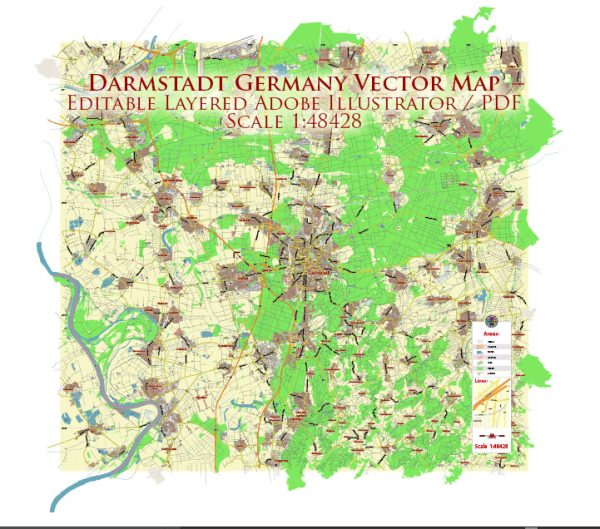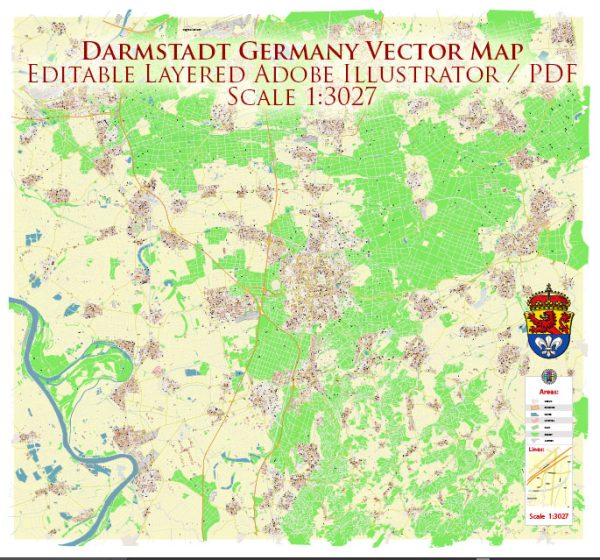Darmstadt, located in the state of Hesse, Germany, has a rich history of urban development that spans several centuries. The city has undergone significant changes, influenced by political, cultural, and economic factors. Here’s a brief overview of the history of urban development in Darmstadt:
- Medieval Period (11th–16th centuries): Darmstadt’s history can be traced back to the 11th century when it was a small village. Over the centuries, it grew in size and importance. The town received its city rights in 1330, granting it the ability to govern itself and hold markets. Throughout the medieval period, Darmstadt developed around a central marketplace, with trade and commerce playing crucial roles in its growth.
- Renaissance and Baroque Periods (17th–18th centuries): Darmstadt experienced further expansion during the Renaissance and Baroque periods. The ruling landgraves, notably Louis I, contributed to the city’s architectural development. The construction of the Luisenplatz square and the palace complex, the latter of which includes the Residenzschloss (Residence Palace), are examples of this period’s architectural legacy. Baroque-style gardens were also created around the palace.
- 19th Century: The 19th century brought industrialization and modernization to Darmstadt. The city’s population grew, and new neighborhoods emerged. The Grand Duchy of Hesse, of which Darmstadt was a part, played a role in the founding of the German Empire in 1871. The city continued to develop economically and culturally during this time.
- Art Nouveau (Jugendstil) Period (late 19th–early 20th centuries): Darmstadt gained prominence as a center for the Art Nouveau movement, known as Jugendstil in Germany. Artists and architects, such as Peter Behrens and Joseph Maria Olbrich, were associated with the Darmstadt Artists’ Colony, a group that aimed to integrate art into everyday life. The Mathildenhöhe complex, designed by various artists, remains a testament to this artistic period.
- World Wars and Post-War Reconstruction: Darmstadt, like many German cities, faced the destruction caused by World War II bombings. The post-war period saw extensive reconstruction efforts, with a focus on rebuilding damaged infrastructure and housing. The city gradually modernized, incorporating contemporary urban planning principles.
- Contemporary Period: In recent decades, Darmstadt has evolved into a vibrant, modern city. The establishment of the Technische Universität Darmstadt (Technical University of Darmstadt) in the early 20th century has contributed to the city’s reputation as a center for technology and innovation. The city continues to balance historical preservation with the demands of a dynamic urban environment.
Darmstadt’s urban development reflects a blend of historical heritage and contemporary progress, making it an intriguing city with a diverse architectural and cultural landscape.



 Author: Kirill Shrayber, Ph.D.
Author: Kirill Shrayber, Ph.D.